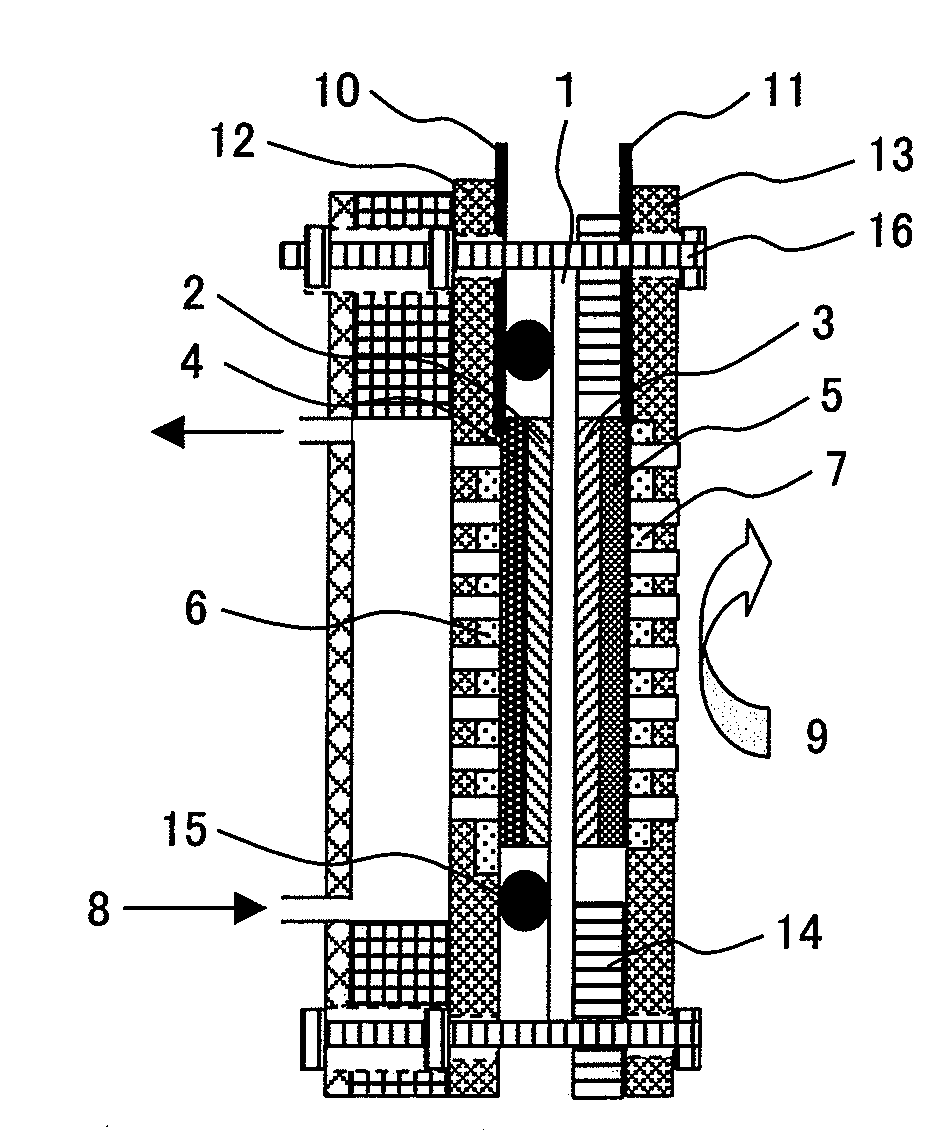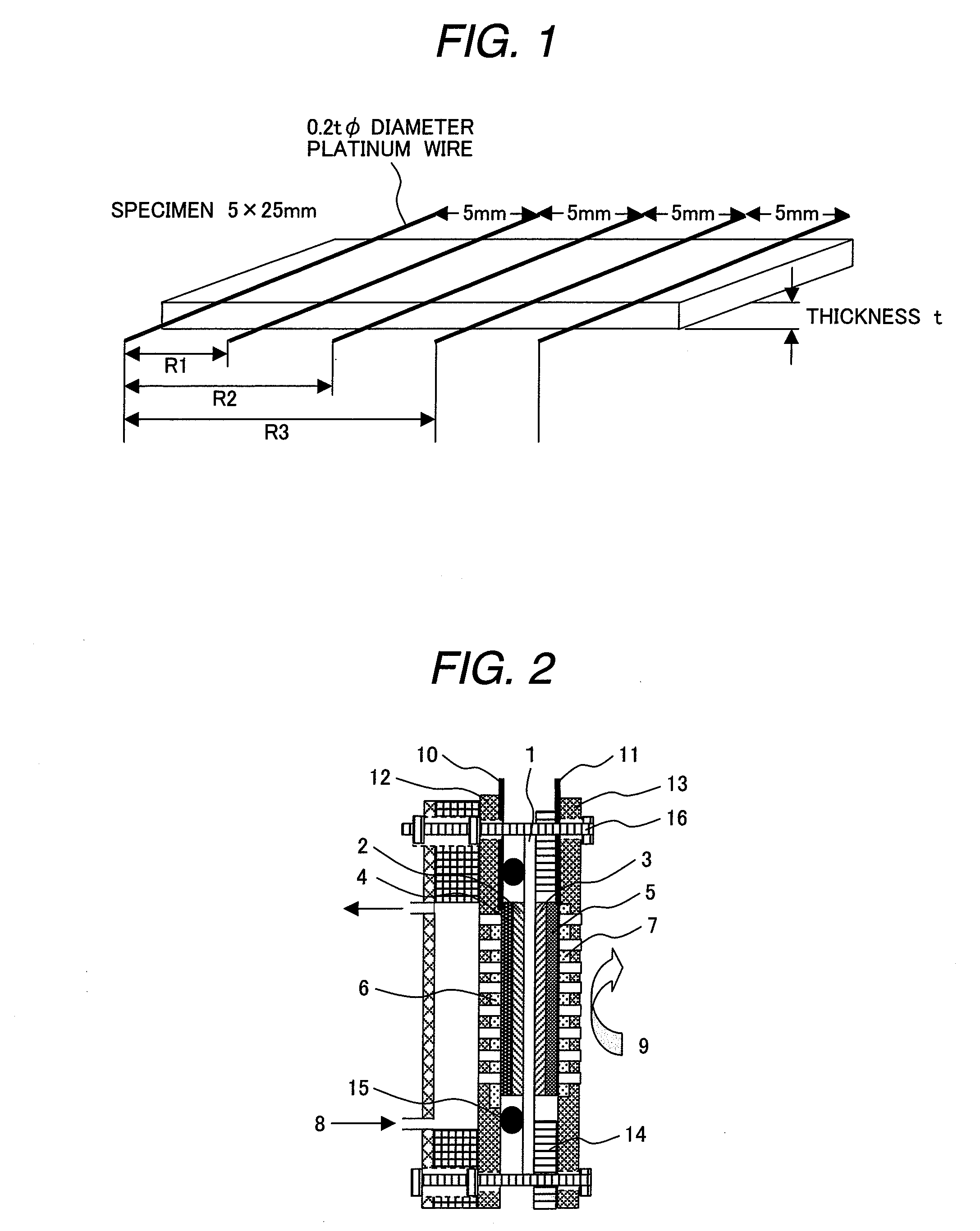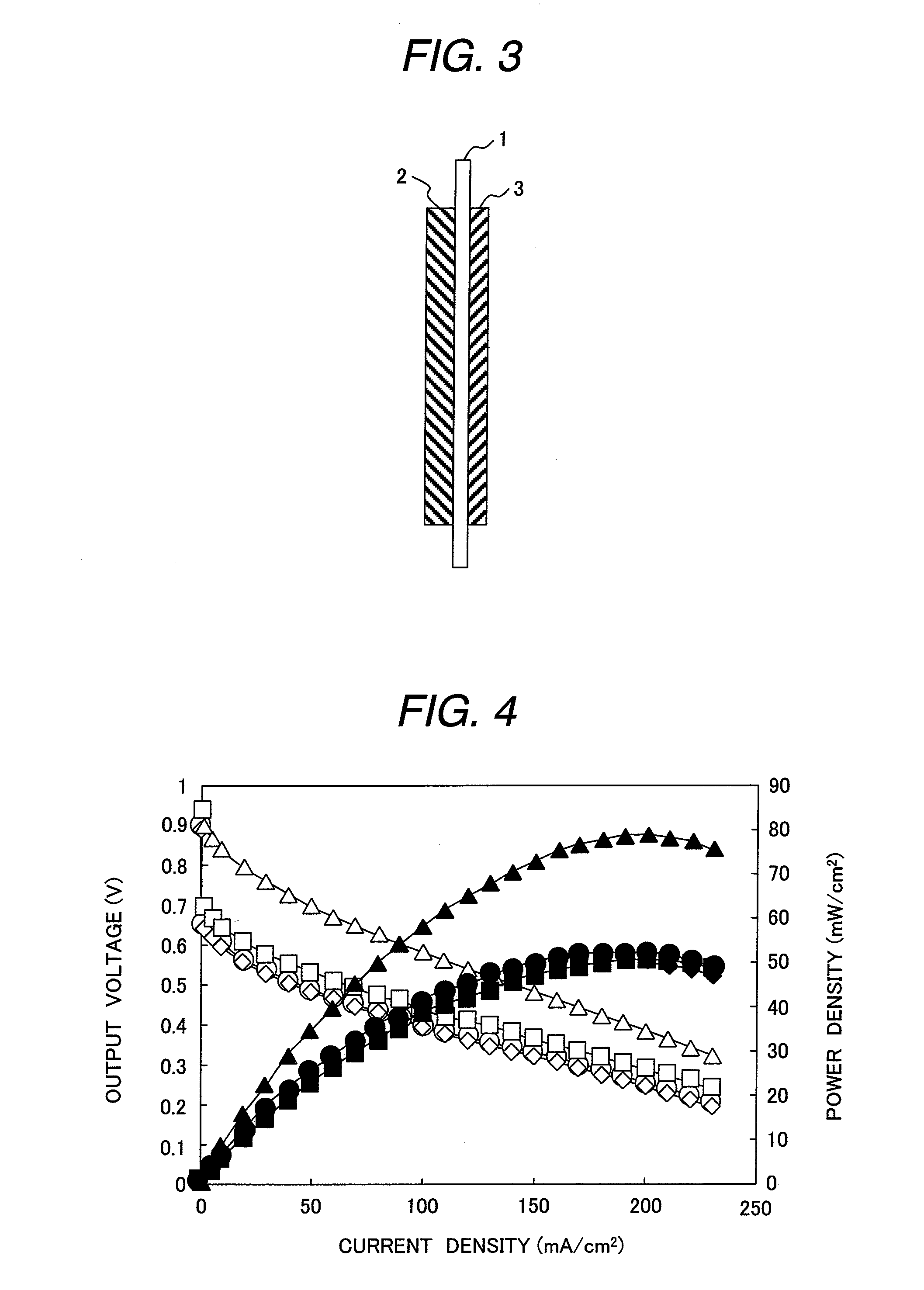Hydrocarbon type polymer electrolyte, membrane/electrode assembly, and fuel cell power source
a polymer electrolyte and hydrocarbon-type technology, applied in the field of solid polymer electrolytes, can solve the problems of reduced large amount of polymer electrolyte membrane phenolic hydroxyl group, and high ionic conductivity, and achieve high ionic conductivity, low cost, and high resistance to oxidative degradation.
- Summary
- Abstract
- Description
- Claims
- Application Information
AI Technical Summary
Benefits of technology
Problems solved by technology
Method used
Image
Examples
example 1
(1) Preparation of Polyhydroxybenzimidazole
[0096]In a three-neck flask equipped with a stirrer and a nitrogen feed tube were dissolved 8.035 g (37.5 mmol) of 3,3′,4,4′-tetraaminobiphenyl and 13.137 g (37.5 mmol) of diphenyl 2,5-dihydroxyisophthalate in 200 ml of sulfolane, and oxygen was removed by feeding nitrogen gas into the flask. The mixture was heated under ref lux in an atmosphere of nitrogen gas flow for ninety-six hours, was cooled to room temperature, and was poured into a mixture containing 1 liter of methanol and 0.5 liter of acetone. The precipitated polymer was filtered, was sequentially washed with distilled water and acetone, was dried, and thereby yielded a polyhydroxybenzimidazole containing a structural unit represented by Chemical Formula 20:
(2) Preparation of Poly-Sulfobutoxy-Benzimidazole
[0097]The polyhydroxybenzimidazole having the structural unit of Chemical Formula 20 (10.6 g) was dissolved in 87 g of N-methylpyrrolidone under flow of nitrogen gas. The solut...
example 2
(1) Preparation of Polysulfomethylbenzimidazole
[0112]In a three-neck flask equipped with a stirrer and a nitrogen feed tube were placed 8.035 g (37.5 mmol) of 3,3′,4,4′-tetraaminobiphenyl, 10.17 g (37.5 mmol) of 2,5-dicarboxy-1,4-sulfomethylbenzene monosodium salt, 110 g of polyphosphoric acid (phosphorus pentoxide content: 75%), and 87.9 g of phosphorus pentoxide. The mixture was gradually raised in temperature to 100° C. under flow of nitrogen gas, was kept to 100° C. for one and a half hours, was raised in temperature to 150° C., and was kept to 150° C. for one hour. Next, the mixture was raised in temperature to 200° C. and was kept to 200° C. for four hours.
[0113]After cooling to room temperature, the mixture was combined with water, the contents were taken out, were pulverized in a mixer, and were washed with water repeatedly until the filtrate became neutral on a pH indicator paper. The resulting polymer was dried under reduced pressure and thereby yielded a polysulfomethylbe...
example 3
(1) Preparation of Polyhydroxybenzimidazole
[0129]In 200 ml of sulfolane were dissolved 5.175 g (37.5 mmol) of 3,3′,4,4′-tetraaminobenzene and 13.137 g (37.5 mmol) of diphenyl 2,5-dihydroxyisophthalate in a three-neck flask equipped with a stirrer and a nitrogen feed tube, and oxygen in the flask was removed by feeding nitrogen gas thereto. The mixture was heated under reflux in an atmosphere of nitrogen gas flow for ninety-six hours, was cooled at room temperature, and was poured into a mixture containing 1 liter of methanol and 0.5 liter of acetone. The precipitates were filtered, were sequentially washed with distilled water and acetone, were dried, and thereby yielded a polyhydroxybenzimidazole having a structural unit represented by Chemical Formula 25:
(2) Preparation of Polysulfopropoxybenzimidazole
[0130]In 87 g of N-methylpyrrolidone was dissolved 8.23 g of the above-prepared polyhydroxybenzimidazole having a structural unit represented by Chemical Formula 25 under flow of nit...
PUM
| Property | Measurement | Unit |
|---|---|---|
| temperature | aaaaa | aaaaa |
| ionic conductivity | aaaaa | aaaaa |
| temperatures | aaaaa | aaaaa |
Abstract
Description
Claims
Application Information
 Login to View More
Login to View More - R&D
- Intellectual Property
- Life Sciences
- Materials
- Tech Scout
- Unparalleled Data Quality
- Higher Quality Content
- 60% Fewer Hallucinations
Browse by: Latest US Patents, China's latest patents, Technical Efficacy Thesaurus, Application Domain, Technology Topic, Popular Technical Reports.
© 2025 PatSnap. All rights reserved.Legal|Privacy policy|Modern Slavery Act Transparency Statement|Sitemap|About US| Contact US: help@patsnap.com



